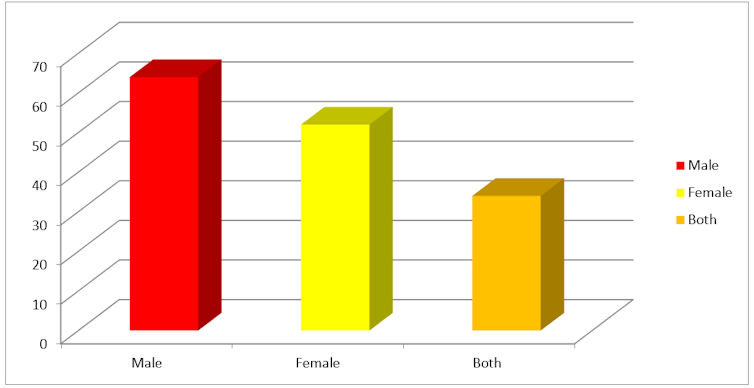How men are embracing 'clean eating' posts on Instagram
- Written by Stephanie Alice Baker, Lecturer in Sociology, City, University of London
Instagram is the world’s fastest growing social network site, with over 700 million accounts comprised of mostly young (18-29-year old), female users. Part of the app’s appeal is that it gives users a chance to experiment with self-presentation techniques and identify with different communities and movements online.
One such movement is “clean eating”: embracing a diet comprised of foods perceived to be “clean” and “pure”, such as unprocessed, unrefined, and nutrient-rich ones, typically eaten as small meals throughout the day. A relatively recent phenomenon used to promote blogs, cook books and exercise programs, the movement advocates a plant-based diet mostly free of red meat, gluten, sugar and alcohol.
“Clean eating” has an underlying moral dimension elevating certain foods over those deemed to be dirty and impure. By default, those who do not subscribe to a “clean” diet and lifestyle are perceived to be of lower status.
Read more: A dietitian puts extreme 'clean eating' claims to the test – and the results aren't pretty
Instagram’s demographics - and the weight loss industry’s focus on women - might lead one to expect women would dominate “clean eating” posts, but our new study has found that men feature more prominently in them.
We examined images categorised under the hashtags #cleaneating and #eatclean, looking at 144 top posts over eight days. We examined the nine highest ranking daily posts for each hashtag according to the quantity of engagement (such as “likes”, comments) and the quality of it. The most surprising finding was the prevalence of men, with 68% of posts featuring male subjects.
 Figure 1: Gender subjects featured in clean-eating top posts (frequency)
Figure 1: Gender subjects featured in clean-eating top posts (frequency)
Clean eating posts on Instagram make a strong connection between lifestyle, gender and identity. Most of those depicted appear to be late teens or young adults. Images that achieved top post status overwhelmingly focused on individual bodies, rather than food.
These posts subscribed to specific ideals of masculinity. Most portrayed men engaging in muscle presentation, with exaggerated displays of flexed arms and abdominal muscles to convey virile strength and power. The muscular features of those depicted were accentuated through the use of framing, camera focus, filters and bodily positioning.
Often staged in a gym environment, these images emphasised the hard work involved in adopting a “clean” lifestyle. The hashtags accompanying them regularly featured the words “determination”, “motivation”, “healthy choices” and “no excuses”, feeding into narratives about health as an individual choice and responsibility.
Posts of this kind represent a form of hegemonic masculinity, where fortitude, athleticism and competitiveness are valued over other masculine forms. Despite the cultural connection between meat and masculinity, when framed in relation to individual health and the environment, clean eating and meatless meals were presented as rational choices.
The prevalence of masculine display in “clean eating” top posts also feeds into ideals of healthism: a way of locating the problem of health and disease at the level of the individual rather than as a state or societal responsibility.
The frequency with which men featured in clean eating top posts reveals not only the importance of diet and body image for men today, but the ways in which the diet industry and advertising increasingly targets men.
Instagram has become a profitable enterprise, with bloggers using their image to influence others to purchase products and services. While there is an absence of overt advertising on Instagram, over half of the images we analysed doubled as native advertising for weight loss programs, supplements and food products. This was particularly the case with those images that focused on the body (for example, muscle presentation shots), with attractive bodies doubling as advertisements by feeding aspirational desires.
For instance, one muscle presentation post was accompanied by the caption: “Make progress not excuses. Make a change today and let me take your physique to the next level” - the image of a muscular man at the gym operating as an ad for a personal trainer.
Despite the common assumption that social media allows for more fluid expressions of identity, our research indicates the degree to which commercial interests infiltrate the platform.
Authors: Stephanie Alice Baker, Lecturer in Sociology, City, University of London
Read more http://theconversation.com/how-men-are-embracing-clean-eating-posts-on-instagram-97923





